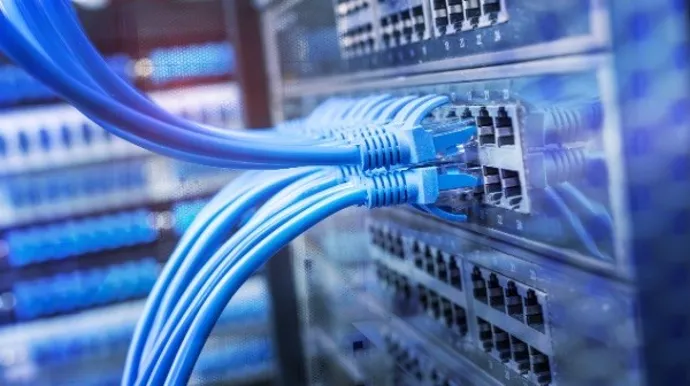Identity crisis: Artificial intelligence and the flawed logic of ‘mind uploading’

We can think of the copy as a digital clone or twin, but it would not be you.
It would be a mental copy of you, including all of your memories up to the
moment your brain was scanned. But from that time on, the copy would generate
its own memories inside whatever simulated world it was installed in. It might
interact with other simulated people, learning new things and having new
experiences. Or maybe it would interact with the physical world through robotic
interfaces. At the same time, the biological you would be generating new
memories and skills and knowledge. In other words, your biological mind and your
digital copy would immediately begin to diverge. They would be identical for one
instant and then grow apart. Your skills and abilities would diverge. Your
knowledge and understanding would diverge. Your personality and objectives would
diverge. After a few years, there would be significant differences. And yet,
both versions would “feel like the real you.” This is a critical point – the
copy would have the same feelings of individuality that you have.
It’s Time to Normalize Cyberattack Data

The hope is that as an open standard, it will be adopted and used with existing
security standards and processes. Then, as developers and users incorporate OCSF
into their products and processes, security data normalization will become
simpler and less burdensome. This, in turn, will enable security teams to do
better at analyzing attack data, identifying threats, and defending their
organizations from cyberattacks. Ultimately, John Graham-Cumming, Cloudflare’s
CTO, said in a statement, “Every business deserves a simple, straightforward way
to analyze and understand the security landscape — and that starts with their
data. By participating in the OCSF, we hope to help the entire security industry
focus on doing the work that matters instead of wasting countless hours and
resources on formatting data.” I hope this is true. I hate wasting time. And
time is one thing we never have enough of when we’re dealing with a security
problem. If OSCF can succeed in its aims, it will be a major step forward in
dealing with large-scale security problems.
3 Expert-Backed Strategies for Boosting Your Entrepreneurial Energy
Entrepreneurs are a special breed of overthinkers. We're constantly making
decisions, so we have to think fast on our feet. But we also must take the time
to weigh our options out properly. And so we think up all possible scenarios:
the good, the bad and the ugly. This used to be one of my biggest hurdles when
starting. What if this client falls through? What if users aren't satisfied with
our product? What if we can't attract enough attention and be sustainable? What
will I do? My mind was my biggest enemy. Consequently, after a long night of
tossing and turning, I'd wake up unmotivated to start the day. Here's the thing
I've learned since: energy thrives on confidence. And confidence only comes when
you believe in your abilities. As co-authors Linda Bloom, L.C.S.W., and Charlie
Bloom, M.S.W.. write in Psychology Today, "Self-trust is not trusting yourself
to know all the answers, nor is it believing that you will always do the right
things," they explain. "It's having the conviction that you will be kind and
respectful to yourself regardless of the outcome of your efforts."
4 Flaws, Other Weaknesses Undermine Cisco ASA Firewalls

"If you have access to the virtual machine, you have full access inside the
network, but more importantly, you can sniff all the traffic going through,
including decrypted VPN traffic," Baines says. "So, it is a really great place
for an attacker to chill out and pivot, but probably just sniff for credentials
or monitor the traffic flowing into the network." Baines discovered the issue
when he was investigating the Cisco ASDM to get "a level set on how the GUI
(graphical user interface) works" and pull apart the protocol, he says. A
component installed on administrators' systems, known as the ASDM launcher,
could be used by attackers to deliver malicious code in Java class files or
through the ASDM Web portal. As a result, attackers could create a malicious
ASDM package to compromise the administrator's system through installers,
malicious Web pages, and malicious Java components. The ASDM vulnerabilities
discovered by Rapid7 include a known vulnerability (CVE-2021-1585) that allows
an unauthenticated remote code execution (RCE) attack, which Cisco claimed was
patched in a recent update, but Baines discovered it remained.
A Shift in Computer Vision Is Coming

Is computer vision about to reinvent itself, again? Ryad Benosman, professor of
ophthalmology at the University of Pittsburgh and an adjunct professor at the
CMU Robotics Institute, believes that it is. As one of the founding fathers of
event-based vision technologies, Benosman expects that neuromorphic vision —
computer vision based on event-based cameras — will be the next direction
computer vision will take. “Computer vision has been reinvented many, many
times,” Benosman said. “I’ve seen it reinvented twice at least, from scratch,
from zero.” Benosman cited the shift in the 1990s from image processing with a
bit of photogrammetry to a geometry-based approach and then to today’s rapid
advance toward machine learning. Despite those changes, modern computer-vision
technologies are still predominantly based on image sensors — cameras that
produce an image similar to what the human eye sees. According to Benosman,
until the image-sensing paradigm is no longer useful, it holds back innovation
in alternative technologies. The development of high-performance processors,
such as GPUs, delay the need to look for alternative solutions and thus have
prolonged this effect.
What’s the Go programming language really good for?

Go has been compared to scripting languages like Python in its ability to
satisfy many common programming needs. Some of this functionality is built into
the language itself, such as “goroutines” for concurrency and threadlike
behavior, while additional capabilities are available in Go standard library
packages, like Go’s http package. Like Python, Go provides automatic memory
management capabilities including garbage collection. Unlike scripting languages
such as Python, Go code compiles to a fast-running native binary. And unlike C
or C++, Go compiles extremely fast—fast enough to make working with Go feel more
like working with a scripting language than a compiled language. Further, the Go
build system is less complex than those of other compiled languages. It takes
few steps and little bookkeeping to build and run a Go project. ... Go binaries
run more slowly than their C counterparts, but the difference in speed is
negligible for most applications. Go performance is as good as C for the vast
majority of work, and generally much faster than other languages known for speed
of development.
Ex-CIA security boss predicts coming crackdown on spyware
Protecting individuals' privacy is something all of us — including elected
officials — should be very concerned about, Mestrovich said. "I would expect,
going forward, there will be either executive orders or legislation passed to
ensure that the civil liberties and the rights that we all expect to data
privacy and privacy of our own activities are kept sacrosanct," he added. As a
CISO himself, ransomware is top of mind. "Ransomware is a huge threat to just
our economic viability," Mestrovich told us, citing a Cybersecurity Ventures
forecast that global cybercrime costs to grow by 15 percent per year over the
next five years, reaching $10.5 trillion annually by 2025. "Clearly, the cyber
criminals have monetized the theft of data or depriving an organization use of
its data," Mestrovich said. "Until we can do something to prevent the economic
gain that they have from the theft of data or the denial of an organization's
access to his data. This is only going to increase"
Urgent security warning issued as hackers shift ransomware attacks to small businesses

The Director of the NCSC Richard Browne said that in the past these groups
typically focussed on larger organisations. However they have now shifted focus
to smaller entities. “We have been dealing with the threat of ransomware for
some time; however, we have seen a noticeable change in the tactics of criminal
ransomware groups, whereby rather than largely focussing on Governments,
critical infrastructure and big business, they are increasingly targeting
smaller businesses. “This is a trend that has been observed globally, and
Ireland is no exception with several businesses becoming victims of these groups
in the past number of weeks,” he said. Richard Browne said the letter sent to
IBEC by the NCSC and GNCCB has outlined guidance for small companies and how
they can deal with the attack. “Whilst we appreciate that many business owners
are understandably nervous of the threat ransomware poses, there are some
straightforward security measures that can be put in place to ensure that an
organisations data and systems remain secure,” he added.
Computer Vision and Deep Learning for Agriculture

AI applications can analyze weather and soil conditions, water usage, and risk
of diseases to help farmers reduce the risk of crop failures by providing
valuable insights like the right time to sow seeds, right crop/seed choices.
Detecting plant diseases, weeds, and pests beforehand can reduce the use of
chemicals like herbicides and pesticides and bring cost savings. Many companies
have started using robots that can eliminate 80% of the volume of the substances
generally sprayed on the crops and bring down the expenditure on herbicides by
90% Further, the use of AI in harvesting, picking, and vacuum apparatus can
quickly identify the location of the harvestable produce and help determine the
proper fruits. The Strawberry Harvest is a classic example. ... With
satellite imagery and weather data, AI applications can analyze the market
trends, like which crops are in demand and which are more profitable. This helps
the farmers to increase their revenue by guiding them about future price
patterns, demand level, type of crop to sow for maximum benefit, pesticide
usage, etc.
Rethinking Web Application Firewalls
The vulnerabilities are so numerous now and cloud native applications have
larger attack surfaces with no way to mitigate vulnerabilities using traditional
means, Tiperneni explained. “It’s no longer sufficient to throw out a report
that tells you about all the vulnerabilities in your system,” Tiperneni said.
“Because that report is not actionable. People operating the services are
discovering that the amount of time and effort it takes to remediate all these
vulnerabilities is incredible, right? So they’re looking for some level of
prioritization in terms of where to start.” And the onus is on the user to
mitigate the problem, Tiperneni said. Those customers have to think about the
blast radius of the vulnerability and its context in the system. The second
part: How to manage the attack surface. In this world of cloud native
applications, customers are discovering very quickly, that trying to protect
every single thing, when everything has access to everything else, is an almost
impossible task, Tiperneni said.
Quote for the day:
"The Leadership Seduction of
storytelling invites self-pity, exaggerates one's importance, and encourages
inaction." -- Catherine Robinson-Walker
No comments:
Post a Comment